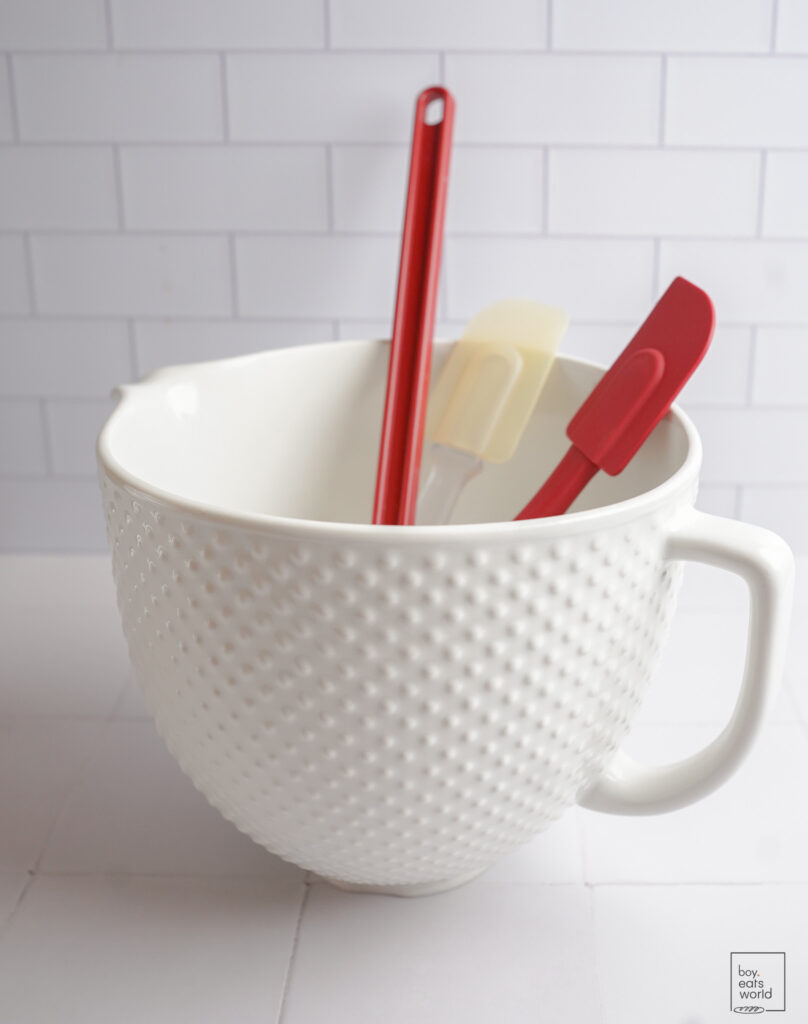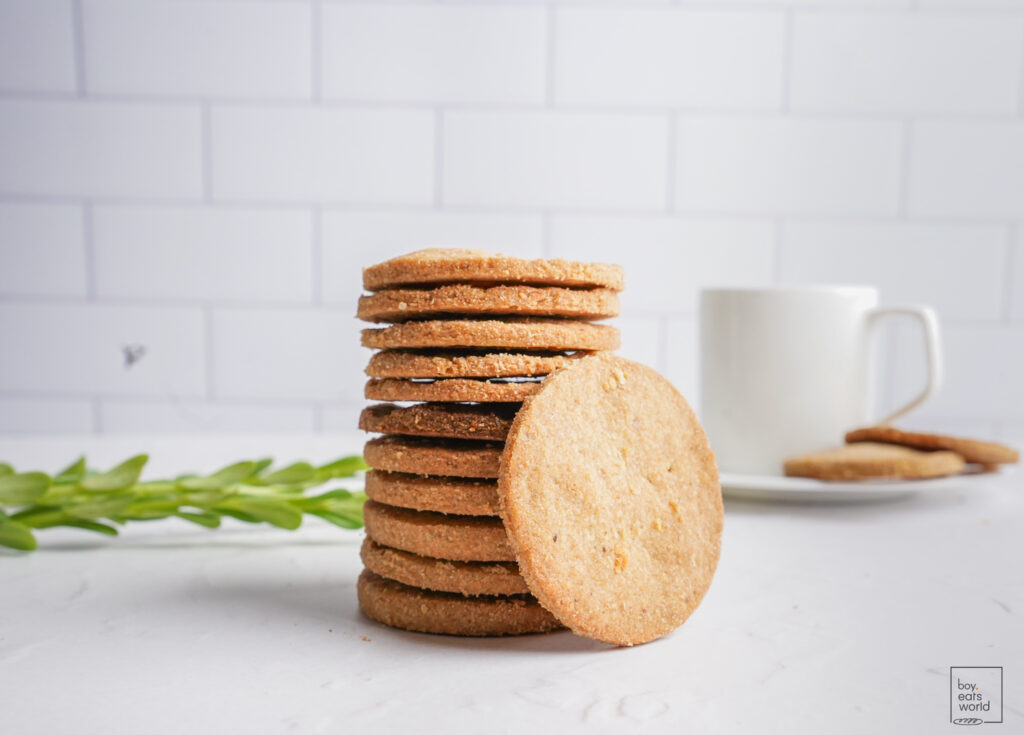
Whether a recipe follower or a recipe rebel, you need to know more about the science and art of baking, to attain that difference between a good and a great cake. Let me rephrase that, a moister and softer cake. The more you practice the better you get at it. While baking a cake, people tend to focus more on the technicalities and forget the basics. There are a plethora of tips that bakers can provide you with. Nevertheless, @boyeatsworld has come up with a few easy and basic baking tips to make your baking journey a delicious one! But the first and foremost tip would be to enjoy it.
did you say tips?

Do Not Over-Mix & Under-Mix
Whether a recipe instructs you to use an electric mixer or a whisk, make sure you combine the cake batter just until the ingredients are mixed. Over-mixing batter, whether for cakes, cupcakes, bread, muffins, or other baked goods, results in a tough-textured baked dish because you deflate all the air and over-develop the gluten. Similarly, do not under-mix. Obviously, we want all of the ingredients to be combined and not be alienated.
It’s best to cream your cake (combine egg/butter with sugar) using an Electric Whisk or a Whisk and fold the cake using a Spatula or a Paddle Attachment.
Remember to scrape off the sides
Baking is peculiar in terms of quantity. If a certain quantity goes awry, the entire recipe alters, and your outcome will suffer the brunt. Perhaps that’s why it’s necessary to scrape the sides of the utensils you are using to mix the ingredients well. This ensures that the amounts of the ingredients used are not altered and you get the required yield as well.

Don’t open your oven often
The pleasure of baking and eating a cake is palpable, which is presumably why people open the oven a hundred times to see if the cake is baked or not. This allows cool air to enter, and the sudden temperature difference leads the rising cake to settle. You should bake the cake according to the recipe’s instructions and check it for doneness one or two times. It’s also quite useful to have an oven thermometer on hand. Unless you have a new or frequently calibrated oven, the temperature of your oven is likely to be incorrect. An inefficient oven may wreak havoc on your baked products. An oven thermometer is a low-cost solution. While they are inexpensive, they are completely indispensable in a baker’s kitchen. Put it in your oven so you always know what the temperature stands at. These temperature changes can lead to a lot of cracks and deformities in the visual structure of the cake.
Don’t scoop out the flour
All flours have a different consistency. All-purpose flour is the ideal flour for baking a cake. Cake flour, on the other hand, is a low protein flour that has been carefully milled into a delicate consistency. This delicate, sensitive texture goes immediately into your cooked cake. Some recipes, however, just cannot handle fine cake flour. But carefully measuring flour and other dry ingredients is important. Don’t scoop the flour from the jar or the can. Since the flour is often densely packed, dipping the measuring cup into the bag or jar will almost always provide too much flour. 1 cup of all-purpose flour or according to the recipe, spooned and leveled, gives out the required quantity needed for baking a cake.
The temperature of the ingredients matter
Baking is not a particularly forgiving activity. Understanding the proper temperature for a certain ingredient will result in better baking outcomes. Here’s why! There is science and sound reasoning behind it. If a recipe asks for room temperature items, use them at their required temperature. Let us focus on butter as an example to help you understand better. Most cake recipes begin by creaming butter and sugar. Butter can contain air, and creaming is the process through which butter holds that air. While baking, the trapped air expands due to the heat, resulting in a fluffy cake. Furthermore, because room temperature components are warmer, they bind together more easily and quickly, minimising over-mixing. To put it simply, cold components do not emulsify together, possibly leading to a denser cake.
Line the utensil being used for baking
The type of utensil you use has a significant impact on the texture and appearance of your cake. It has the power to either bake or break your cake. It is critical to prep the pan so that the cake does not stick to it. The pan can be prepared in a multitude of ways. You could either use butter to grease the pan or use a parchment paper. The most efficient method, though, is to sprinkle flour on the pan to keep the cake from sticking.


Preheat the Oven
Cooking requires full attention to make the food delicious. This explains why a Mise En Place is so crucial in a kitchen. A Mise En Place gives you an idea of all the ingredients and tools you have prepared for a meal. In case one component is missing, you will notice and avoid rushing or turning off the oven to go fetch the missing ingredient. This is why preheating the oven is essential. If you put a cake into an oven that’s not hot enough, it will affect the way it rises. Fan ovens can dry a cake slightly so for a longer shelf-life use the conventional setting.
Place the batter immediately in the oven
A cake’s main ingredients include flour, baking soda, yeast, sugar, butter, and so on. These are the components that work together to create the perfect cake. The rising agents generally begin operating immediately and only persist for a limited duration of time, thus if the cake batter is allowed to stand before baking, the raising agents may have expired by the time the cake is baked. Unfortunately, leaving a cake batter out for an extended period of time might have a negative impact on the texture of the cake. A cake often rises as a result of a combination of air stirred into the batter, the leavening action of eggs, and, most notably, the raising agents in the recipe. As a result, the cake will not rise as well and may be heavy or dense in texture. While the cake is baking, the oven should be completely warmed and the batter should be cooked in matching pans.
Use the right shelf
The heat-force in the oven hot-box varies. Most ovens feature two heating elements, one at the bottom and one on top. When we switch on the oven to preheat, both heating components are generally activated in order to heat the oven. Once the oven has reached the temperature we want, the bottom heat source will sometimes kick in to keep the oven at that temperature. Since hot air rises, the top of the oven is persistently hotter, but the bottom of the oven will heat in bursts to maintain the total temperature.
The bottom oven rack is ideal for crust breads and pizzas, as well as other baked items that require a lot of browning on the bottom.
The top oven rack is ideal for items that require a crispy brown top, such as pies and casseroles.
The middle oven rack is a pleasant zone where air circulates, heat sources are properly distributed, and tops and bottoms don’t burn or brown too rapidly. It’s the ideal spot to stay and bake cakes, cookies, and brownies.
Always look out for browning though. If you feel the top of the cake is browning a bit too quick, tent it using a foil or parchment paper to give it to cook from inside.
Every oven is different
Baking, as I previously stated, can only be perfected by practice. Working with your oven takes practice as well. Every oven is unique because they all operate differently and have different temperature settings. You should spend some time with your oven and attempt to figure out how it works. Pro tip: the temperature indicated on the oven is also not accurate. There might be a discrepancy of 2-3 degrees. Check the doneness of your cake with a toothpick or a cake tester. If the top of your cake is getting brown or dry, try covering it from the top with a foil. This will keep the cake from coming into contact with the oven’s heat. It’s important to understand your oven and settings.



NOTE: the above tips are for beginner level bakers only and not for professional use
Key Takeaways
Best be sure to check to mix the cake till you feel it’s mixed and to be mindful about the cake batter on the sides.
Both the temperature of the ingredients and the way of levelling matters, affecting the science of baking.
Understanding your oven, it’s heat dynamics is important. Experiment with it and bake your cake to your oven’s potential.

Hi! How are you today?
My name is Sohail Nath and I welcome you to my happy place, @boy.eatsworld.
This blog, my creativity’s nest covers travel inspirations, authentic yet homemade recipe and food blogs.



